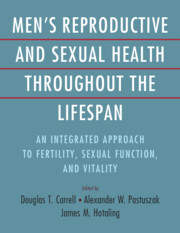 Men's Reproductive and Sexual Health Throughout the Lifespan
Men's Reproductive and Sexual Health Throughout the Lifespan from Section 4 - Laboratory Evaluation and Treatment of Male Infertility
Published online by Cambridge University Press: 06 December 2023
In this review we reflect on the many attempts highlighting key achievements in the field of in vitro spermatogenesis made so far. The research in this field is at a crucial juncture. The evolving technologies (like biofabricated 3D organoids, 3D bioprinting, microfluidics, or organ-on-a-chip) may offer excellent tools and in vitro testicular model systems to advance our understanding and bridge the existing knowledge gaps. Each of these culture systems offers unique advantages and may complement each other to address the common goal of achieving primate spermatogenesis in vitro. There are various possibilities and future scenarios for applying in vitro spermatogenesis as a tool for research and clinical applications in the future.
To save this book to your Kindle, first ensure no-reply@cambridge.org is added to your Approved Personal Document E-mail List under your Personal Document Settings on the Manage Your Content and Devices page of your Amazon account. Then enter the ‘name’ part of your Kindle email address below. Find out more about saving to your Kindle.
Note you can select to save to either the @free.kindle.com or @kindle.com variations. ‘@free.kindle.com’ emails are free but can only be saved to your device when it is connected to wi-fi. ‘@kindle.com’ emails can be delivered even when you are not connected to wi-fi, but note that service fees apply.
Find out more about the Kindle Personal Document Service.
To save content items to your account, please confirm that you agree to abide by our usage policies. If this is the first time you use this feature, you will be asked to authorise Cambridge Core to connect with your account. Find out more about saving content to Dropbox.
To save content items to your account, please confirm that you agree to abide by our usage policies. If this is the first time you use this feature, you will be asked to authorise Cambridge Core to connect with your account. Find out more about saving content to Google Drive.